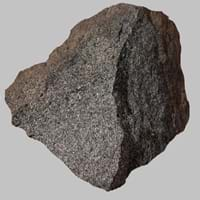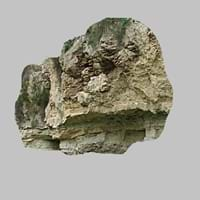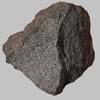Definition
Gabbro is an intrusive igneous rock which is chemically equivalent to plutonic Basalt
A water-soluble mineral sediment resulting from concentration and crystallization by evaporation from an aqueous solution
Discoverer
Christian Leopold von Buch
Usiglio
Etymology
From Latin glaber bare, smooth, bald
From a sediment left after the evaporation
Class
Igneous Rocks
Sedimentary Rocks
Sub-Class
Durable Rock, Hard Rock
Durable Rock, Soft Rock
Group
Plutonic
Not Applicable
Other Categories
Coarse Grained Rock, Opaque Rock
Coarse Grained Rock, Fine Grained Rock, Medium Grained Rock, Opaque Rock
Texture
Phaneritic
Earthy
Color
Dark Grey to Black
Colourless, Green, Grey, Silver, White
Durability
Durable
Durable
Appearance
Veined and Shiny
Glassy, Vesicular and Foilated
Interior Uses
Countertops, Decorative Aggregates, Homes, Interior Decoration
Decorative Aggregates, Entryways, Flooring, Homes, Interior Decoration
Exterior Uses
As Building Stone, As Facing Stone, Garden Decoration, Office Buildings, Paving Stone
As Building Stone, As Facing Stone, Garden Decoration, Paving Stone
Other Architectural Uses
Curbing
Curbing
Construction Industry
As Dimension Stone, Building houses or walls, Cement Manufacture, Construction Aggregate, for Road Aggregate
As a Flux in the Production of Steel and Pig Iron, As a Sintering Agent in Steel Industry to process Iron Ore, As Dimension Stone, Cement Manufacture, for Road Aggregate, Making natural cement, Manufacture of Magnesium and Dolomite Refractories
Medical Industry
Not Yet Used
Taken as a Supplement for Calcium or Magnesium
Antiquity Uses
Artifacts, Monuments, Sculpture
Artifacts
Commercial Uses
Cemetery Markers, Commemorative Tablets, Laboratory bench tops, Jewelry, Sea Defence, Tombstones
Used in the manufacture of Ceramic Powder, Used in the preparation of Sulfuric Acid and Silicon Diborite
Types
Not Available
Not Available
Features
Smooth to touch
Generally rough to touch, Splintery, Veined
Archaeological Significance
Monuments
Used
Not Yet Used
Famous Monuments
Data Not Available
Not Applicable
Sculpture
Used
Not Yet Used
Famous Sculptures
Data Not Available
Not Applicable
Pictographs
Not Used
Used
Petroglyphs
Not Used
Used
Figurines
Used
Not Yet Used
Formation
Gabbro, a mafic rock, forms due to cooling and crystallization of magma underneath Earth's surface.
Evaporite is water-soluble mineral sediment which forms from concentration and crystallization by evaporation from an aqueous solution.
Mineral Content
Augite, Olivine, Plagioclase, Pyroxene
Calcite, Cancrinite, Gypsum, Kyanite, Magnetite
Compound Content
Aluminium Oxide, CaO, Chromium(III) Oxide, Iron(III) Oxide, Potassium Oxide, MgO, Sodium Oxide, Silicon Dioxide, Sulfur Trioxide
CaMg(CO3)2, CaO, Calcium Sulfate, KCl, MgO, NaCl
Types of Metamorphism
Impact Metamorphism
Burial Metamorphism, Cataclastic Metamorphism, Contact Metamorphism, Impact Metamorphism, Regional Metamorphism
Types of Weathering
Chemical Weathering
Not Applicable
Types of Erosion
Coastal Erosion
Not Applicable
Grain Size
Coarse Grained
Medium to Fine Coarse Grained
Fracture
Conchoidal
Conchoidal
Porosity
Highly Porous
Less Porous
Luster
Not Available
Subvitreous to Dull
Cleavage
Not Available
Perfect
Toughness
1.6
Not Available
Specific Gravity
2.86-2.87
2.86-2.99
Transparency
Opaque
Translucent
Density
2.7-3.3 g/cm3
2.8-2.9 g/cm3
Specific Heat Capacity
Not Available
Resistance
Impact Resistant, Pressure Resistant, Wear Resistant
Heat Resistant, Pressure Resistant
Deposits in Eastern Continents
Asia
India, Russia
Not Available
Africa
South Africa
Not Available
Europe
Germany, Greece, Italy, Scotland, Turkey
United Kingdom
Others
Greenland
Not Yet Found
Deposits in Western Continents
North America
Canada, USA
USA
South America
Brazil, Colombia, Venezuela
Colombia, Paraguay
Deposits in Oceania Continent
Australia
New Zealand, Queensland
Central Australia, Western Australia
All about Gabbro and Evaporite Properties
Know all about Gabbro and Evaporite properties here. All properties of rocks are important as they define the type of rock and its application. Gabbro belongs to Igneous Rocks while Evaporite belongs to Sedimentary Rocks.Texture of Gabbro is Phaneritic whereas that of Evaporite is Earthy. Gabbro appears Veined and Shiny and Evaporite appears Glassy, Vesicular and Foilated. The luster of Gabbro is not available while that of Evaporite is subvitreous to dull. Gabbro is available in dark grey to black colors whereas Evaporite is available in colourless, green, grey, silver, white colors. The commercial uses of Gabbro are cemetery markers, commemorative tablets, laboratory bench tops, jewelry, sea defence, tombstones and that of Evaporite are used in the manufacture of ceramic powder, used in the preparation of sulfuric acid and silicon diborite.










